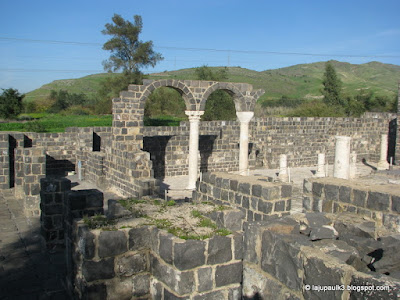"8:26 And they arrived at the country of the Gadarenes, which is over against Galilee. 8:27 And when he went forth to land, there met him out of the city a certain man, which had devils long time, and ware no clothes, neither abode in [any] house, but in the tombs. 8:28 When he saw Jesus, he cried out, and fell down before him, and with a loud voice said, What have I to do with thee, Jesus, [thou] Son of God most high? I beseech thee, torment me not. 8:29 (For he had commanded the unclean spirit to come out of the man. For oftentimes it had caught him: and he was kept bound with chains and in fetters; and he brake the bands, and was driven of the devil into the wilderness). 8:30 And Jesus asked him, saying, What is thy name? And he said, Legion: because many devils were entered into him. 8:31 And they besought him that he would not command them to go out into the deep. 8:32 And there was there an herd of many swine feeding on the mountain: and they besought him that he would suffer them to enter into them. And he suffered them. 8:33 Then went the devils out of the man, and entered into the swine: and the herd ran violently down a steep place into the lake, and were choked. 8:34 When they that fed [them] saw what was done, they fled, and went and told [it] in the city and in the country. 8:35 Then they went out to see what was done; and came to Jesus, and found the man, out of whom the devils were departed, sitting at the feet of Jesus, clothed, and in his right mind: and they were afraid. 8:36 They also which saw [it] told them by what means he that was possessed of the devils was healed. 8:37 Then the whole multitude of the country of the Gadarenes round about besought him to depart from them; for they were taken with great fear: and he went up into the ship, and returned back again " (Luke 8:26-37). See also Mathew 8:28-33; Mark 5:1-20.
Experience the most vibrant,amazing yet unpredictable strip of land on earth.
Saturday, February 27, 2010
Mosaics from the Byzantine Monastery of Kursi (5th-6th Cent. AD) Contd.-Kursi National Park. During the 9th Cent. AD Kursi was used as residential and storage area by Arabs; See that the shapes of animal and human forms are almost obliterated in the mosaics: assumed to be from the strong Islamic sentiments against icons.
Subscribe to:
Comments (Atom)










































